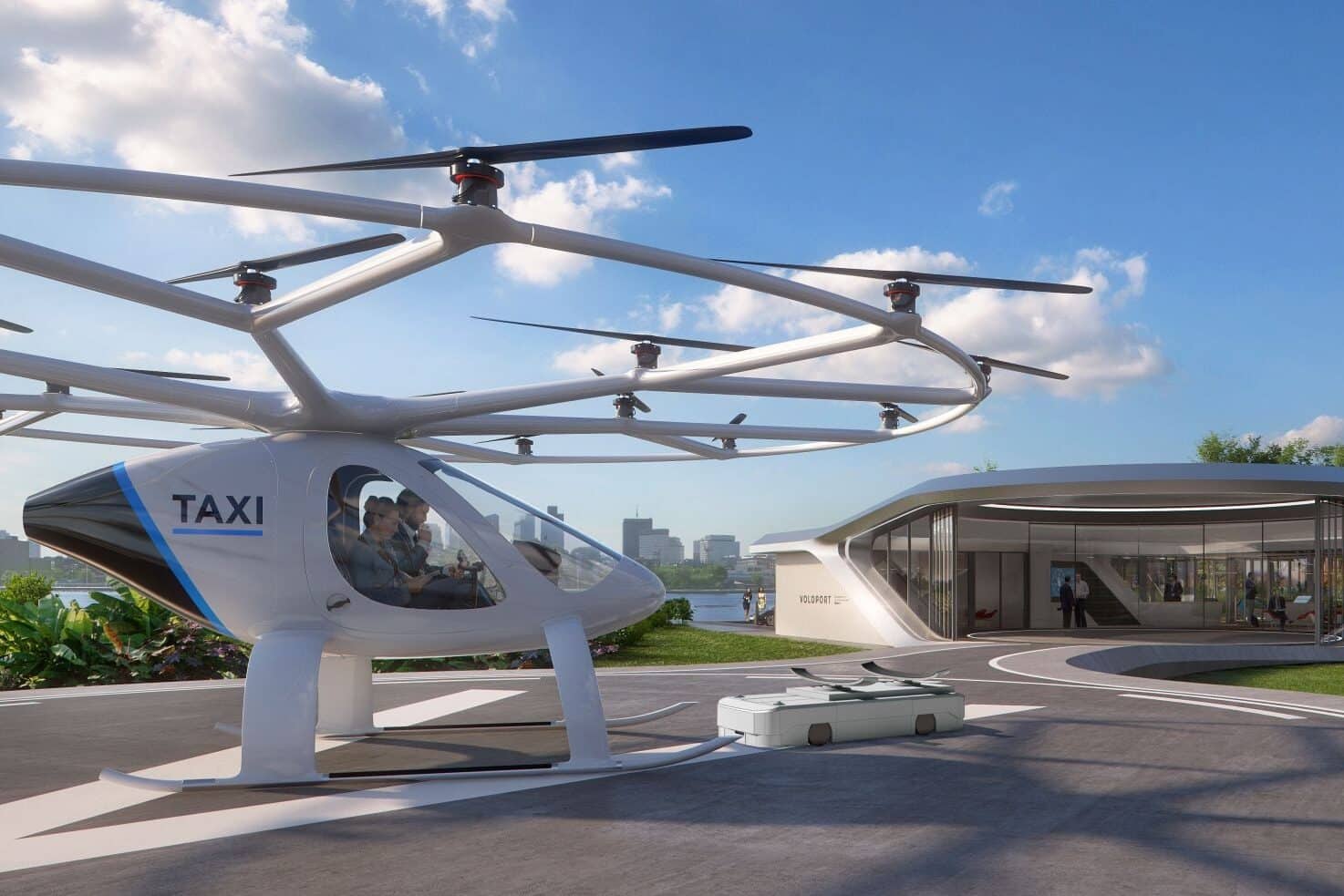Aerospace
By 2026, Dubai hopes to have a fully functioning flying taxi service.

By constructing a fully operating flying taxi network by 2026, Dubai aspires to be the city that leads the future of flying taxis.
According to the Khaleej Times, an English-language newspaper based in the United Arab Emirates, the CEO of Skyports, which builds landing infrastructure for these aerial taxis, said Wednesday that he believed the city would be the first in the world to integrate a “fully-developed network” of flying taxis into its public transportation network.
EASA proposes rules for VTOL operations, including air taxis(Opens in a new browser tab)
According to a news release on its website, Skyports originally announced plans to develop the vertiports – launching pads for these airborne taxis — in February. There are plans to build four landing sites near Dubai International Airport, Palm Jumeirah, Dubai Downtown, and Dubai Marina.
Four vertiport sites located near Dubai International Airport, Palm Jumeirah, Dubai Downtown, and Dubai Marina, which are currently being considered by Skyports Infrastructure and RTA, were presented to a senior delegation which included His Highness Sheikh Mohammed bin Rashid Al Maktoum, accompanied by Crown Prince Sheikh Hamdan bin Mohammed bin Rashid Al Maktoum. These initial locations will connect four of Dubai’s most popular – and populous – areas, providing high-speed, zero-emissions connectivity.
The Lilium : World’s first all-electric flying taxi.(Opens in a new browser tab)
The air mobility exposition demonstrates the RTA and Skyports Infrastructure’s planned roadmap for developing a vertiport network in Dubai for launch by 2026, including a concept for how future vertiport infrastructure may look and how it will integrate with existing transportation, including the RTA’s Dubai Metro network and Dubai International Airport.
Ahmed Bahrozyan, Chief Executive Officer of The Public Transport Agency at RTA, said, “The RTA’s plan for aerial taxis is in line with the Dubai Self-Driving Transport Strategy, which aims to make 25 percent of all trips in Dubai driverless by 2030. The project aims to roll out a new mobility service driven by pioneering technology to ease the mobility of individuals across urban areas in a safe, smooth, and sustainable manner integrated with the public transport network in Dubai. The service is set to be operational by 2026.

Aerospace
When Ratan Tata was denied entry to the airfield at the Aero India show, he waited

During our visit to Aero India 2019, we had the unexpected opportunity to see Ratan Tata at the event, which was a thrilling moment for us. However, there was a surprising hiccup when the security staff didn’t allow him to enter due to a lack of a security pass.
Despite this, he remained calm and patiently waited for about 20 minutes until a member of the Tata team brought him the required pass, after which he calmly proceeded inside. It was a humbling sight, showcasing his composed demeanor even in such situations.
Ratan Tata ji is not only a renowned industrialist but also a trained pilot, holding a pilot’s license. In 2007, he became the first Indian civilian to fly the F-16 Falcon during the Aero India show in Bangalore—a proud moment for the nation.
His passion for aviation extended beyond flying, as he played a key role in shaping India’s aerospace industry. Under his leadership, Tata ventured into manufacturing and maintaining aerospace components while upholding its legacy of quality. Notably, Tata’s collaboration with Airbus to develop and manufacture the C295 aircraft is a testament to its growing influence in the sector.
-

 Aviation2 months ago
Aviation2 months agoMicrosoft Flight Simulator Raises $3 Million to Bring Back the An-225 Mriya
-

 Airlines2 months ago
Airlines2 months agoQatar Citizens Can Travel to the United States Without a Visa
-

 Aviation2 months ago
Aviation2 months agoQatar Airways bans these new Electronic Devices on plane
-

 Airlines2 months ago
Airlines2 months agoJapan Airlines Rolls Out Free Domestic Flights to International Passengers
-

 Defence2 months ago
Defence2 months agoWhich Country Has the Largest Fleet of Fighter Aircraft?
-

 Airport2 months ago
Airport2 months agoWestern Sydney Airport Welcomes Its First Plane After 6 Years of construction
-

 Travel2 months ago
Travel2 months agoQatar Airways Launches Four Additional Flights from Amsterdam
-

 Aviation2 months ago
Aviation2 months agoDid you know ? Once Boeing 747 carried 1088 passenger in 1991








